Linear vs Non-Linear Practice
I want to share the linear vs non-linear practice that my Algebra 1 students completed in their interactive notebooks.
Daily, I am learning how to be a better teacher. I know what worked well for my students last year. And, I know what didn’t work so well. Last year, I assumed that if I taught my students the definition of a linear function, they would be able to apply that definition and use it to find the missing value of a function. I assumed incorrectly. Last year, I taught my students the vocabulary, but I didn’t give them the practice they needed to be successful with this type of question on our end-of-instruction exams.
I decided this year was going to be different. Instead of spending 15 minutes discussing linear vs. non-linear and then moving on, we spent an entire class period working with linear and non-linear functions.
We started out by creating a frayer model for linear functions. I provided students with the definition and characteristics. They worked together, as a class, to create their own examples and non-examples. In almost every class, one student would suggest that a vertical line was an example of a linear function. It was a happy teacher moment for me when another student would realize and explain to the class why the vertical line belonged in the non-example box. Student propelled discussions are awesome! I need to have more of them in my classroom.
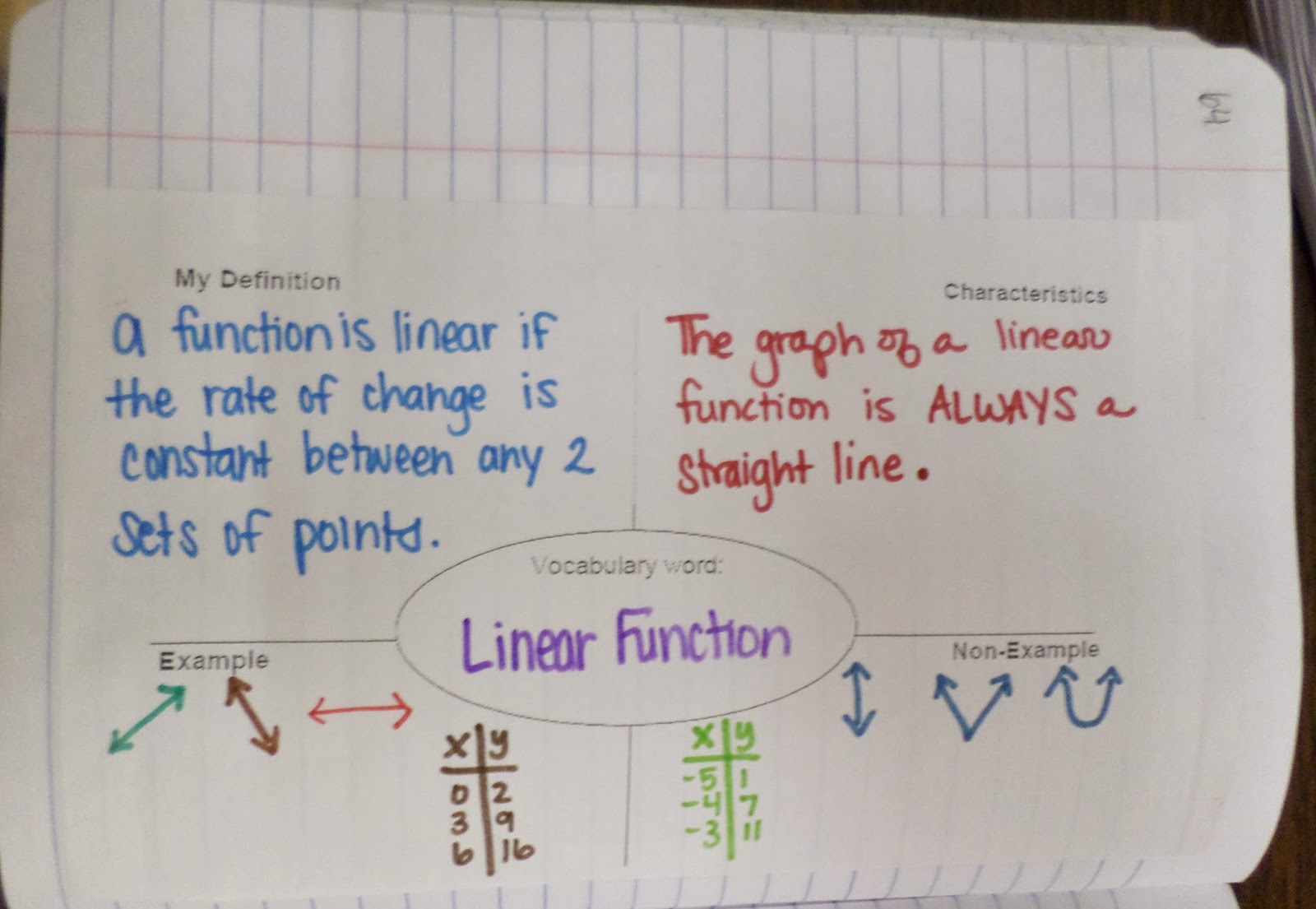
Next, I gave my students a sheet of problems to cut apart. The first thing we looked at was a set of tables. Students were tasked with determining if the table represented a linear function or a non-linear function.
I took these tables and problems from previously released questions for the Oklahoma Algebra 1 EOI (End of Instruction) Exam.
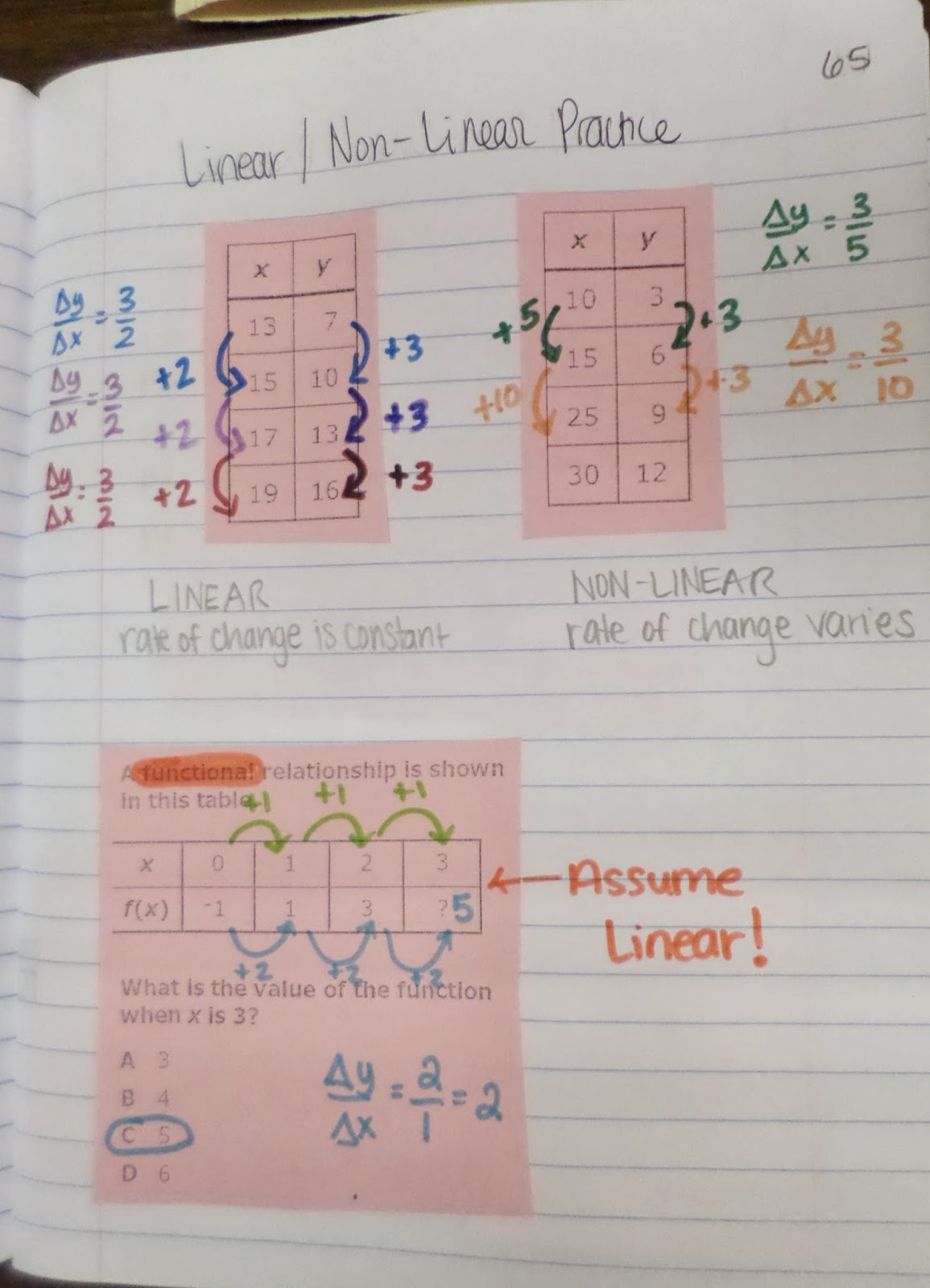
This was the perfect opportunity to use color with a purpose. Students used one color of marker to find the rate of change between the first two lines in the table. Students used a different color of marker for the rate of change between the second and third lines in the table. And, they used a third color to find the rate of change between the third and fourth lines.
In retrospect, I should have given my students more of these tables to practice with. But, we moved on next to some practice EOI questions. These are the questions that I had just assumed in the past that my students would be able to solve on their own. We practiced finding the pattern / rate of change. And, we extended the tables as necessary to find the requested values.
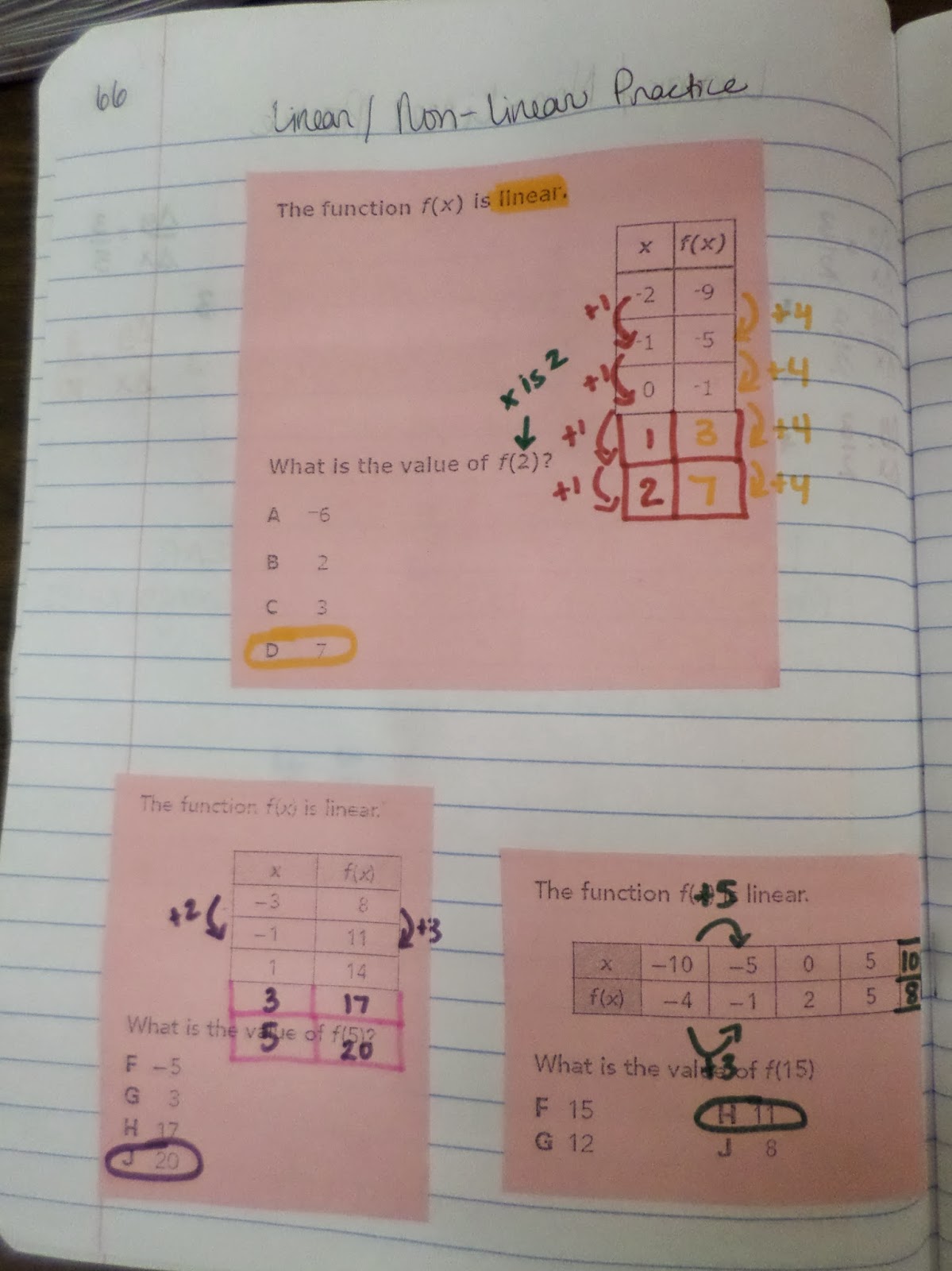
I’m really glad I printed these questions off and had my students glue them in their notebooks. This allowed students to write all over the questions without having to worry about copying down the questions.
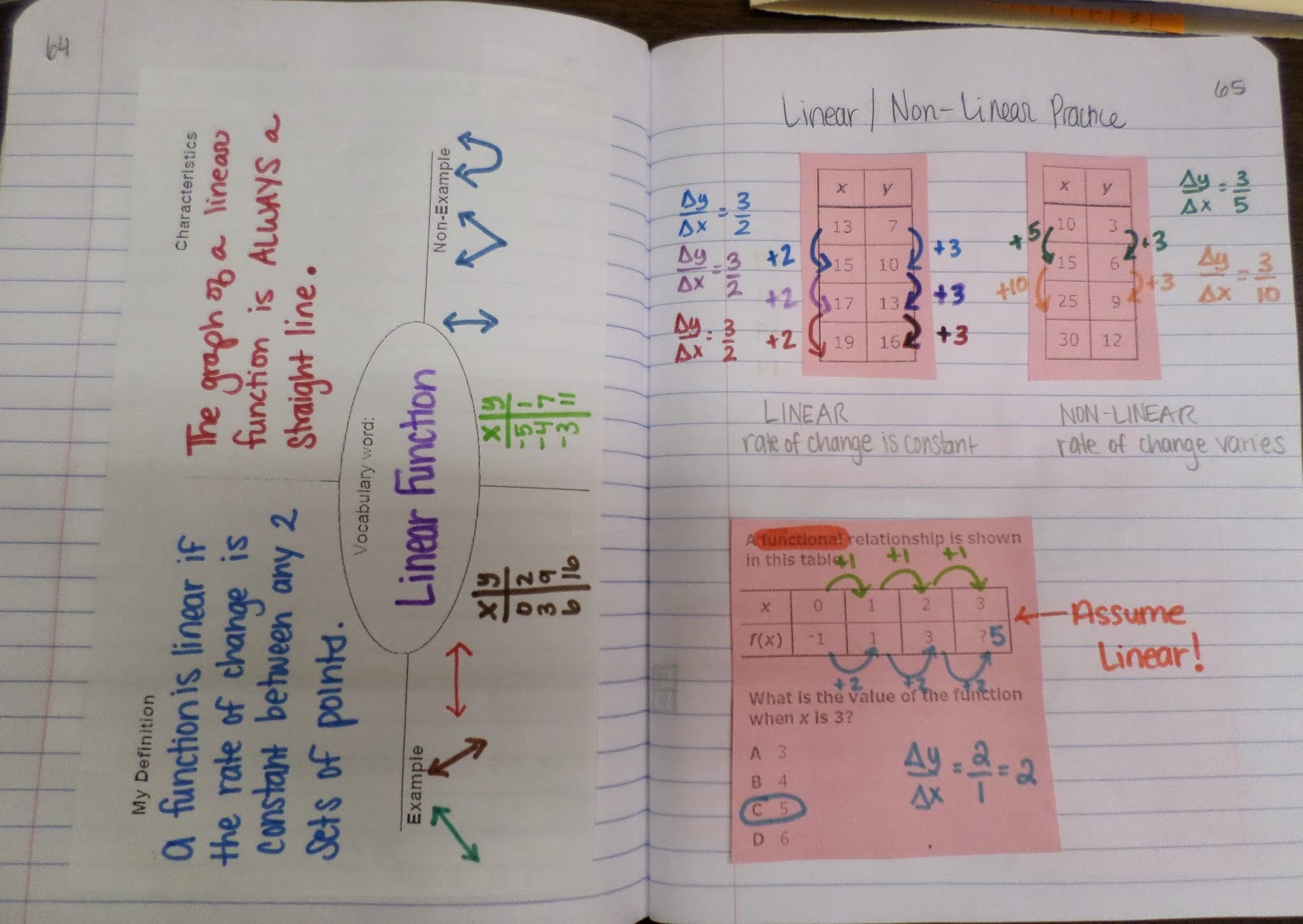
Is this teaching to the test? Yes. But, I think it’s more than that. This is me equipping my students with tools that they need to be successful. Students have to be taught to organize their work. They need to see different ways to approach problems. As we worked through these problems together, discussion naturally happened. In some classes, a few students would realize that we could take a short-cut that would keep us from having to draw extra lines on our tables. Part of the class would use the short-cut. The rest of us would write out the process, step-by-step. We would compare answers and discuss why the short cut worked.
Last year, my students would panic when they would see problems like this. This year, they view them as a sort of puzzle that they have the tools to figure out. I view that as a win!
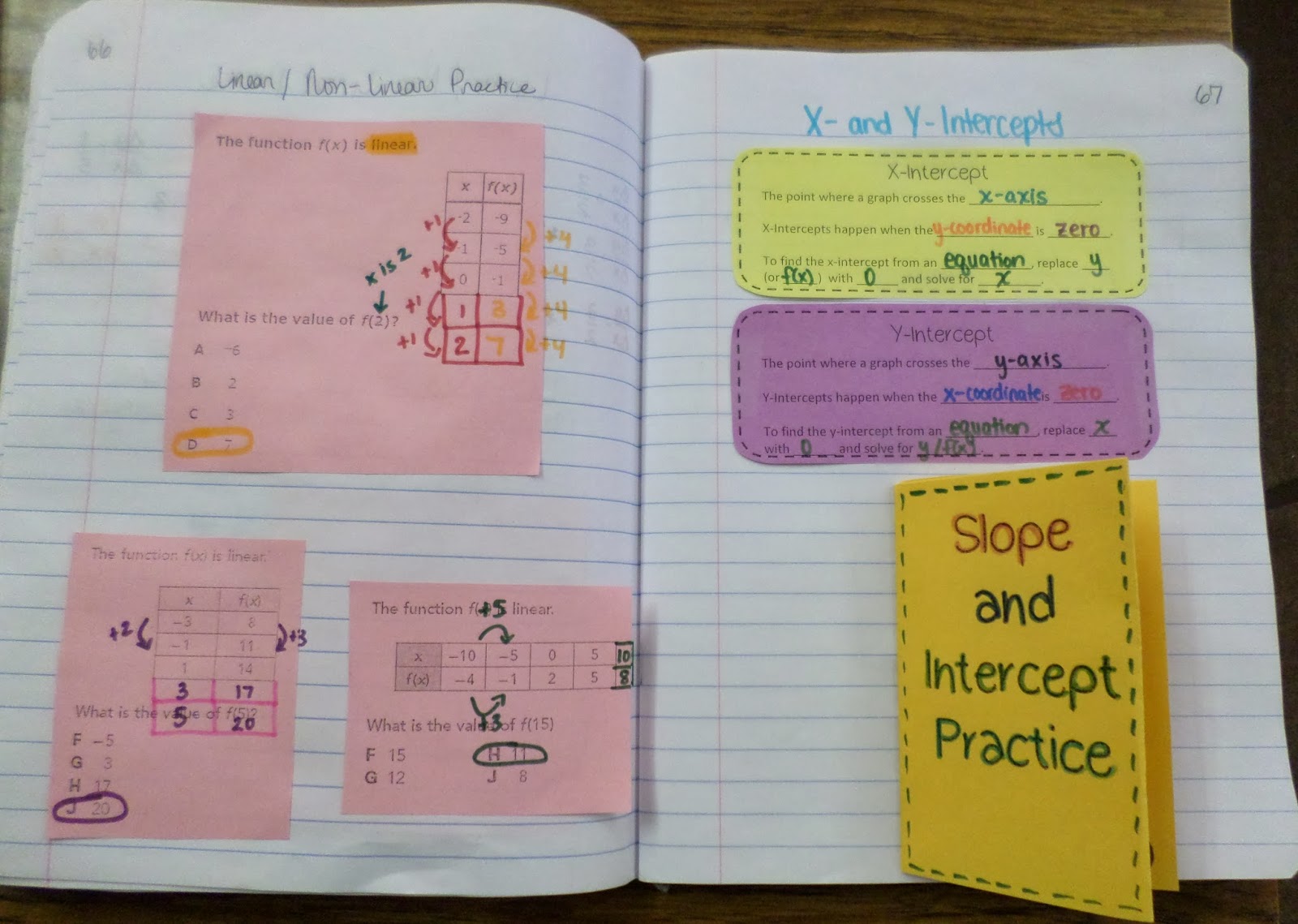
I previously shared my notes over x and y intercepts and slope and intercept practice.
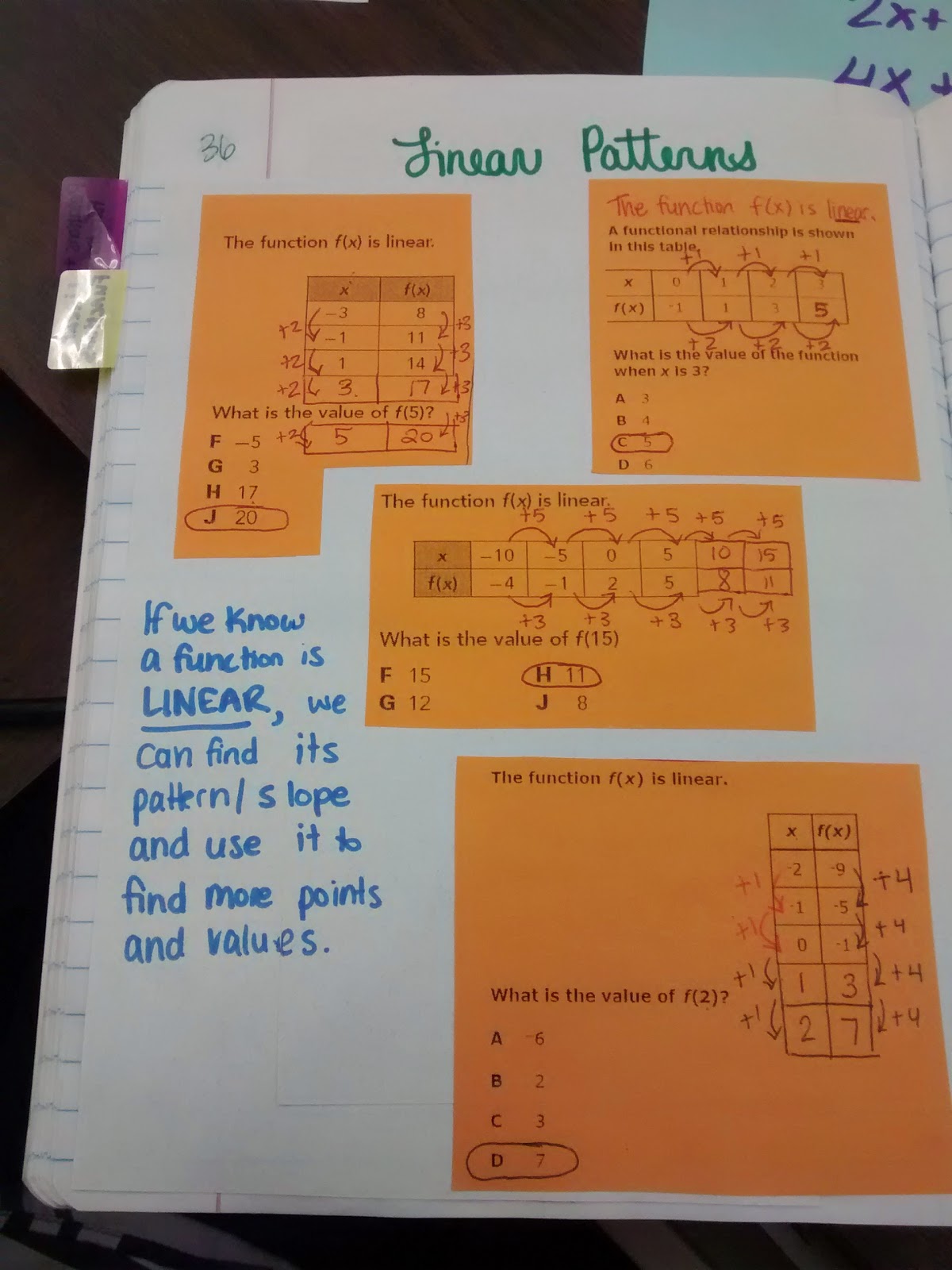
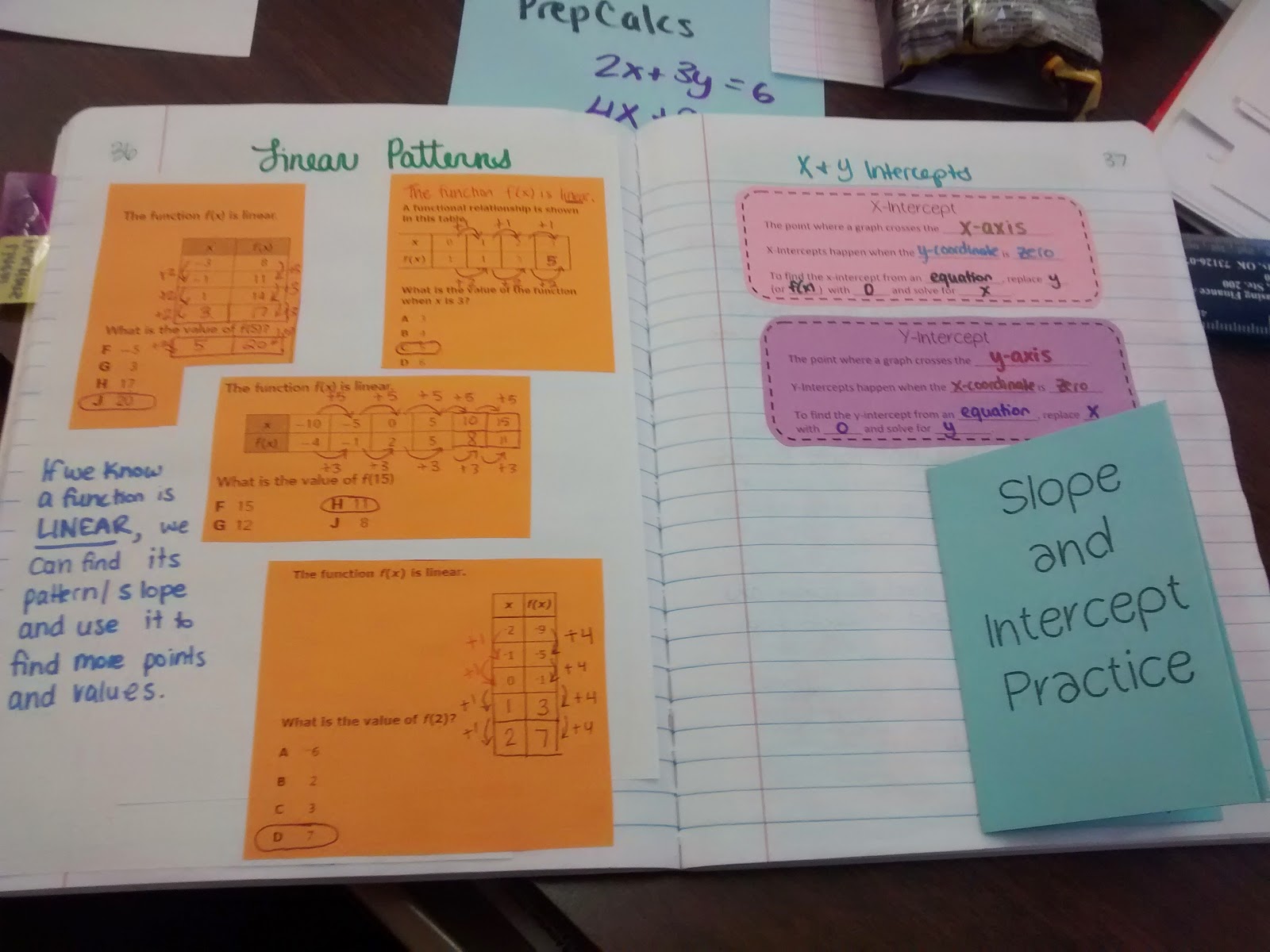


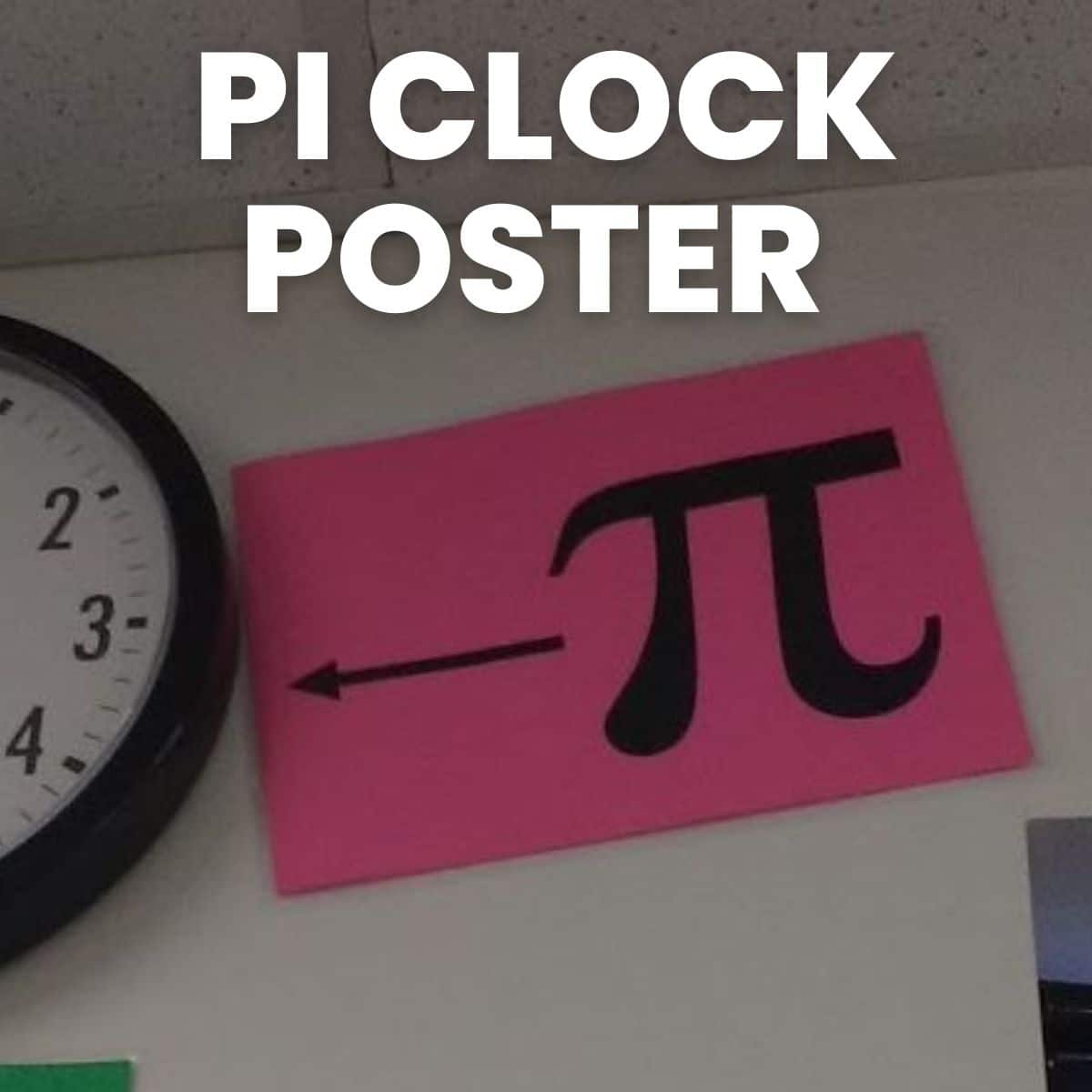
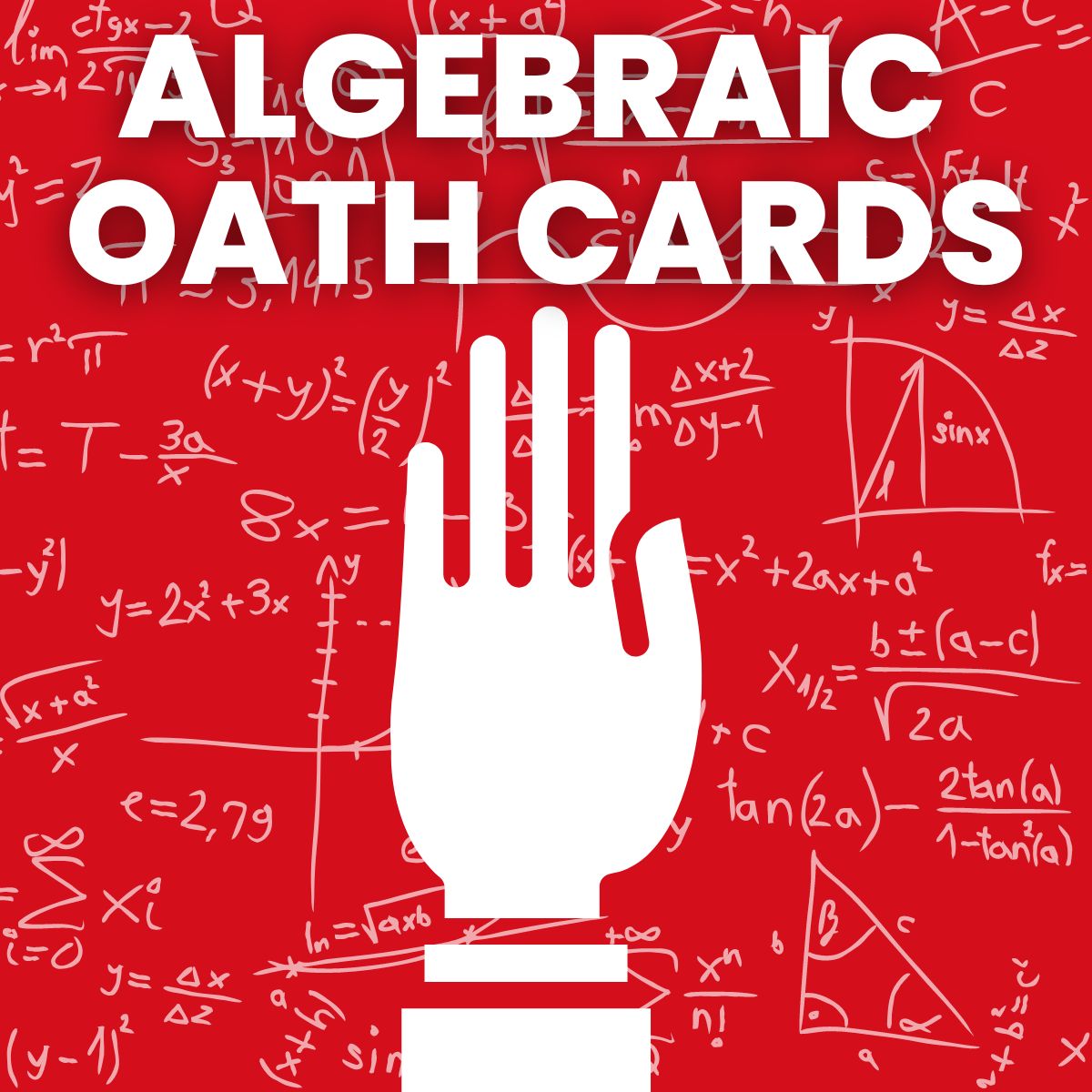
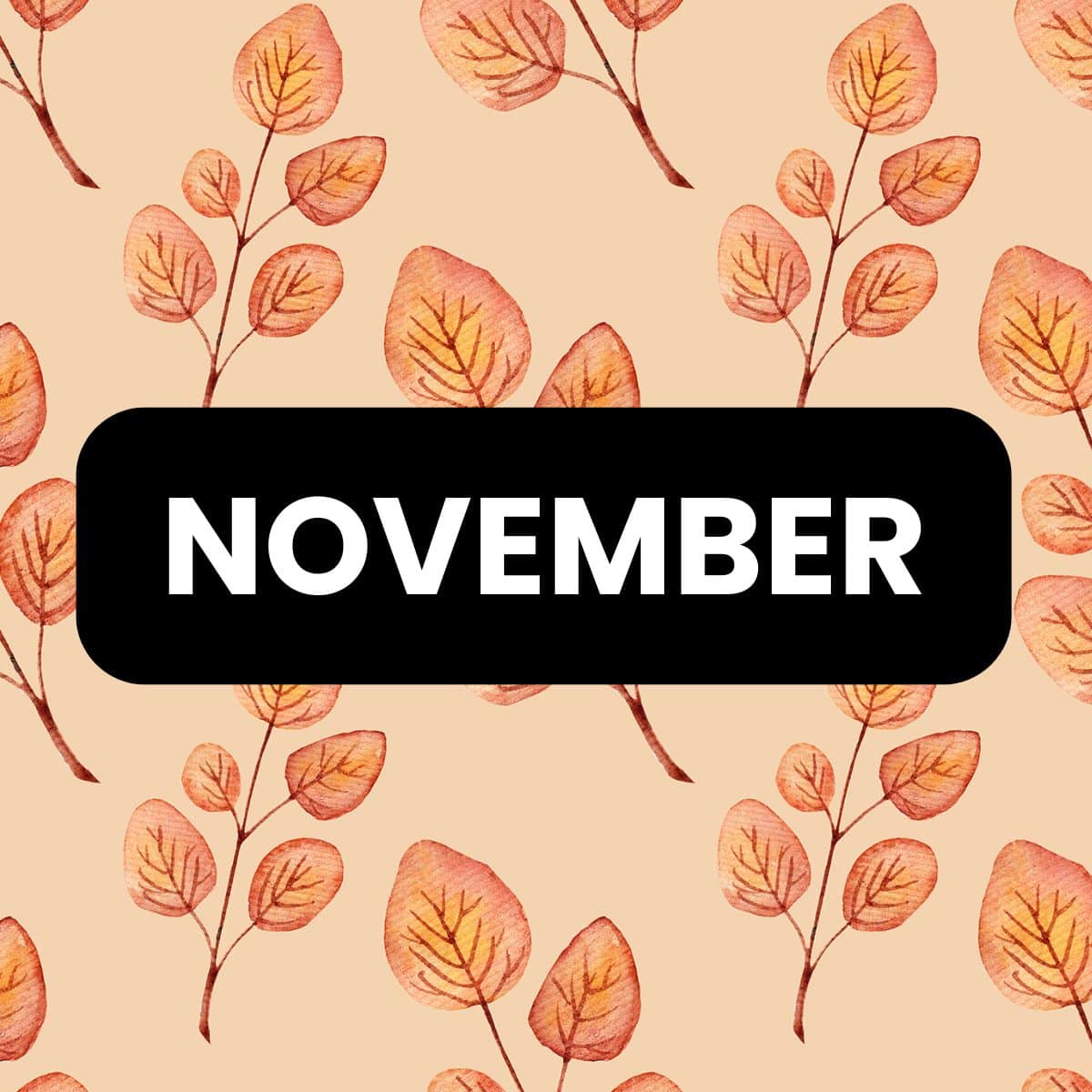
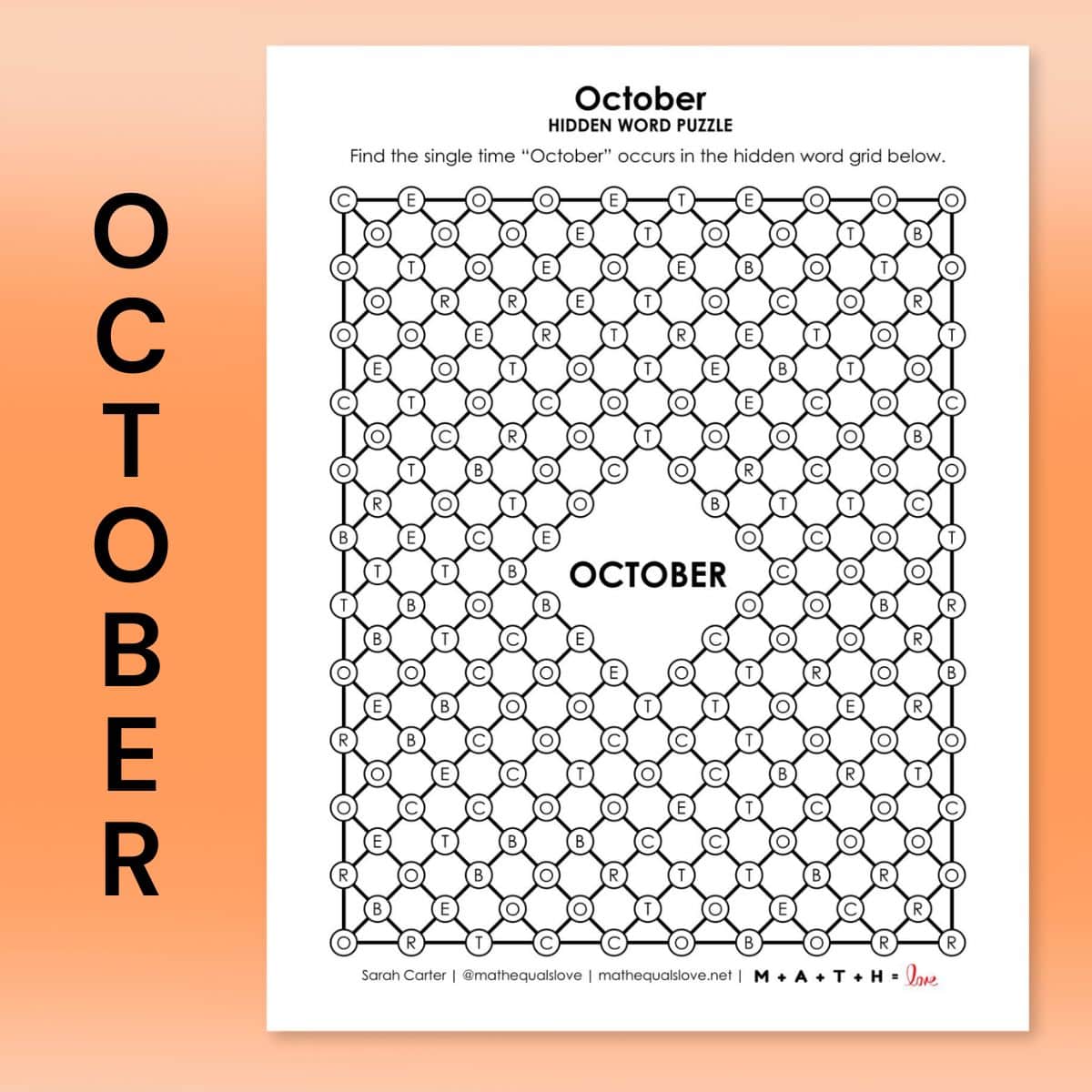
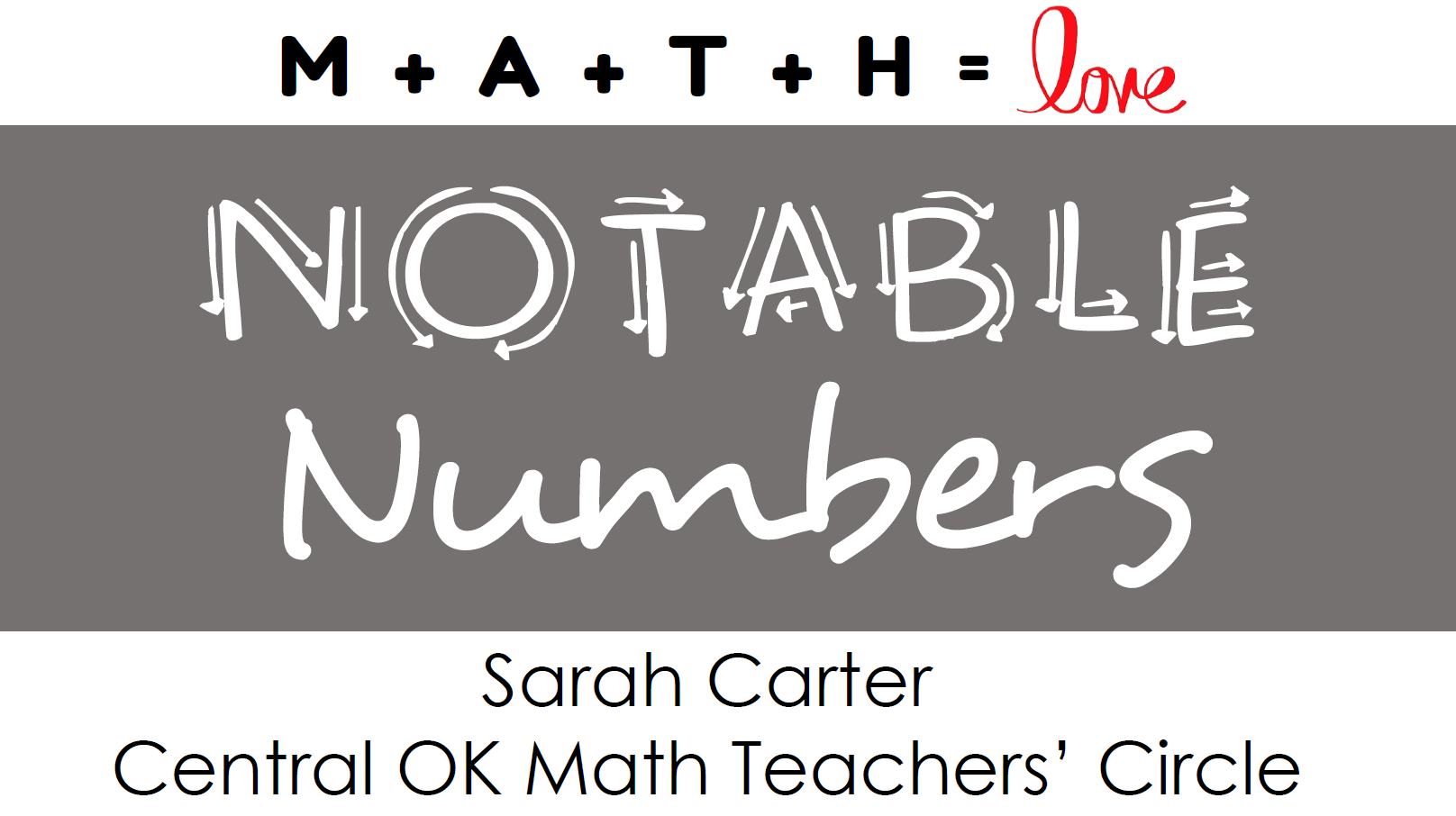
I love it! My students struggle with it too! I already moved past this, but I may need to circle back and do this.
I have a question — you have your students glue a lot of things into their notebooks. Do you find that 1 composition notebook is enough for the year or do they have two?
Definitely! We're almost 3/4 of the way through the year, and we haven't even used up half of the pages in our composition notebook. Now, some of my students who are using spirals have started to run out of pages. It all depends on what you put in your notebooks, though. I do notes only. Other teachers include their bellwork and all assignments. That ends up using a lot more pages.
"Teaching to the test" is almost always said in a negative way, but I think that's an oversimplificaton. If "the test" assesses students' understanding of the things they are supposed to learn in a class, then "teaching to the test" simply means we are teaching to the objectives, i.e. doing our jobs. Now, teaching these objectives can be done in a thoughtful, creative, engaging way, or it can be done in a dull, monotonous way, and that's the joy and challenge of teaching. 🙂
What a thoughtful way of looking at it. Thanks, as always, for sharing!